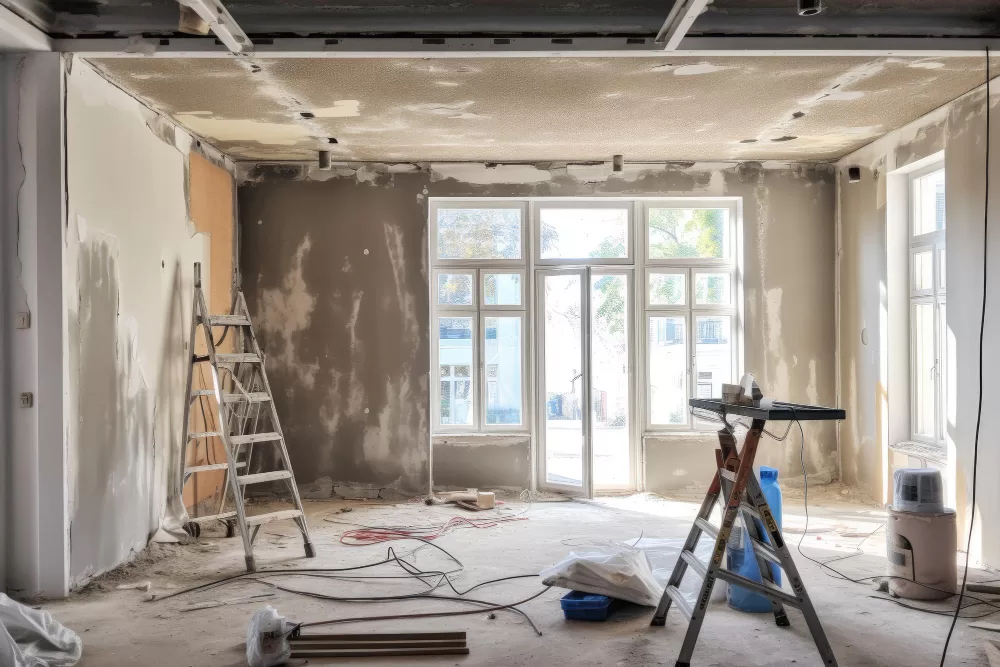Keeping up with minor home repairs like replacing light bulbs or changing batteries in smoke detectors is a great way to make your house last longer. However, some repairs are more serious and can significantly reduce your home’s lifespan.
Fortunately, there are ways to increase your house’s life expectancy and prevent these major issues from occurring.
Insulation keeps your home warm in the winter and cool in the summer, reducing the need to crank up your energy bill. It also reduces moisture buildup and improves indoor air quality.
If your insulation is showing signs of damage or has been compromised by rodents or other critters, you need to replace it right away. This is not only a cost-effective improvement, but it will increase your home’s energy efficiency and comfort and make your property more attractive to potential buyers.
2. Roof
Roofs are a house’s most critical components, shielding it from blazing sun and pounding rains. They shed the water that would rot framing and sheathing, damage insulation and cause countless other problems.
The most common roofs are built from plywood or oriented strand board (OSB), which carpenters nail to the framing, called rafters or roof joists. They also attach shingles, the thin covering that gives the roof its final form.
Explore inspiring transformations and creative upgrades in our guide on Renovation Ideas to Transform UK Homes.
3. Gutters
Gutters are the unsung heroes of your home’s exterior, protecting it from a slew of water-related issues. Without gutters, rainwater can wreak havoc on the roof and overall structure, resulting in costly damage. Gutters also help prevent soil erosion by directing excess rainfall away from your house.
A well-functioning gutter system can also reduce the risk of basement flooding, mold, and other health problems, as well as protect your siding, exterior paint, fascia boards and landscaping. Clogged gutters, on the other hand, create ideal breeding grounds for mosquitoes, termites and other pests.
4. Windows
Keeping windows in good condition improves ventilation and natural lighting. It also provides protection from the elements and enhances curb appeal.
A window’s lifespan is impacted by its location and exposure to sun and rain, along with the quality of its operating mechanism and sealant. Typically, older single-pane windows and poorly insulated window frames have shorter lifespans.
An indication that it’s time to replace windows is drafts, high energy bills and rot. Newer windows are more efficient and offer greater comfort in homes. To eliminate air leaks around a window, use low-expanding spray foam to create a durable seal.
5. Doors
From walls to shingles to doors, there are many aspects of your home that have specific life expectancies. The good news is that you don’t have to invest in a full scale remodel to add new life to these components.
Changing out your doors is a low-cost and easy way to enhance the aesthetics of your home without taking on an extensive remodeling project. Choose from a variety of design options like glass, transoms and sidelights to add more natural light.
Wood exterior doors can become warped over time, especially if exposed to seasonal weather fluctuations. A rusty door can also lead to moisture penetration, which may cause rot and attract termites and other wood-destroying pests.
Discover how the latest advancements in healthcare software are revolutionizing the industry in our exploration of the Top Healthcare Software solutions.
6. Electrical
Much like a person, your electrical system needs annual check-ups, daily care, and a good diet to perform well. It also requires upgraded wiring and equipment that can withstand the rigors of modern appliances.
Tripping breakers, dimming lights, and discolored wall sockets are telltale signs of underlying electrical issues that should be addressed before it’s too late. Performing regular maintenance checks and repairs can help prevent costly replacements and other potential safety hazards in your home.
Electrical wires should never feel hot to the touch – this is a sign of heat degradation that can lead to expensive repairs or even a house fire. Use a multimeter to check voltage and current and other indicators of an aging system.
Discover the latest innovations in project management with our comprehensive guide on 7 Trending Project Management Tools!
7. Plumbing
Plumbing is the network of pipes, fixtures and fittings that convey water to and from different areas of a home or building. This system is critical for delivering clean, potable water, as well as draining waste and sewage.
Leaking pipes and fixtures, slow drains or clogged toilets may signal that a plumbing repair is needed. Using high-quality materials for your plumbing and regularly checking and performing maintenance can help prevent the need for costly repairs or replacements.
Proper drainage and ventilation also help to prevent plumbing problems, including clogs and low water pressure. Use drain covers and strainers to catch hair, food scraps and other debris and to make sure your drains are cleaned regularly. HVAC, electrical, and plumbing are sometimes covered under a home warranty. This reduces the need for repairs and can save you money. Make sure you understand the difference between home insurance vs home warranty to know what coverages you have.


Leave a Reply